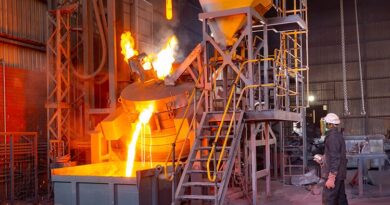Building the continuous supply chains with network approach
Competitive supply chains must enable a new level of coordinated performance that creates a high-fidelity picture of in-process flows across extended networks. Building the continuous supply chain supports contextual deviations, conveys alerts, and drives continuous planning via sense and respond capabilities. This in turn optimises multi-party business processes.
Supply chains are complex networks where over 80% of the data and processes sits within partner systems. To see and act on the latest picture of its supply chain, the organisation needs that data from each of its partners. The problem is that most companies rely solely on an enterprise-centric approach to solve a multi-enterprise problem.
The only way to overcome those limitations is to adopt a ‘network approach’. Connecting all partners to shared processes, data, and metrics managed within a single platform creates a single version of truth for all parties. This allows supply chains to eliminate data silos and inherent latency to reduce the root causes of friction, variability, and costs in today’s supply chains, both internally and externally.
Balancing customer service levels and supply chain costs is nothing new, but customer expectations are more demanding than ever before, due to how quickly products need to be in market to capture sales and quickly turnaround delivery,” adds Lewis. “Customers are under their own pressure to meet on-time and in-full (OTIF) delivery and that flows all the way back upstream.
These challenges highlight that today’s supply chain structures simply aren’t equipped to deal with the high demands if partners and systems aren’t providing ‘single truth’ visibility. With solutions that provide real-time visibility and machine learning to assist with predictive sensing of product availability issues, businesses can make the needed adjustments to meet customer service agreements.
The key lies in advancing supply chain visibility maturity in the organisation. How is supply chain visibility defined today? Leaving aside long-term forecasting and planning that depends on insight to meet demand, the operational aspects of the supply chain that are materially impacted with improved and multi-dimensional visibility involve orders, shipments, and inventory.
Obviously, supply chain visibility can’t be achieved from a single data source, or a single set of participants. Just as the old-fashioned supply ‘chain’ is more accurately described as a network today, so a networked solution to building multi-dimensional visibility to that ecosystem offers the best path to value. A networked visibility approach means that business benefits can be realised across many cross-functional and cross-domain areas.
Supply chain visibility frameworks need to recognise the milestone components that make international product flow successful as well as transparency of outbound truck shipments constrained by connectivity to many different carriers. Collaboration with trading partners is the only way to gain the higher levels of visibility that can significantly improve global supply chain planning and fulfillment operations. To keep production running and customers happy, it is critical to know when expected product availability for fulfillment or consumption is in jeopardy.
Volatility in supply chains makes it hard to profitably meet demand. Sourcing is complex, often involves hundreds of partners, and suppliers often don’t have access to adequate capital, causing instability in the supply base. The majority of inventory, cost, and risk is outside of a single enterprise’s control. Too many siloed systems and not enough shared data make it impossible to reliably meet consumer demands. Companies, with only a few pieces of the puzzle, must scramble to track inventory and provide accurate ETAs.
Automation of supplier payment can help improve supplier relations, optimise working capital, and reduce fees and inefficiencies along the financial supply chain. To automate supplier invoice payments and standardise documentation, companies must transform themselves from silo-based, inward-facing corporate operators to interconnected, highly agile business network orchestrators.
The goal is end-to-end visibility and orchestration. Incorporating the supply chain’s ability to sense and respond, orchestrate finance and trade flows, and utilise advanced data centers and artificial intelligence is crucial for providing transparent visualisation of supply chain dynamics. In addition to these pillars, next generation control towers, or control centers, deliver pervasive end-to-end visibility by capturing impact, interconnections, repercussions, and options. They synchronise participants to help dissolve a functionally siloed approach to fulfillment.
Once organisations adopt a networked solution that allows all parties to share and see real-time updates, the heightened sense and response capabilities allow them to further close the loop and develop the continuous supply chain.




